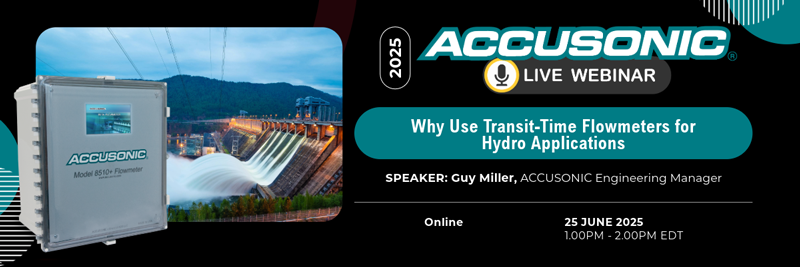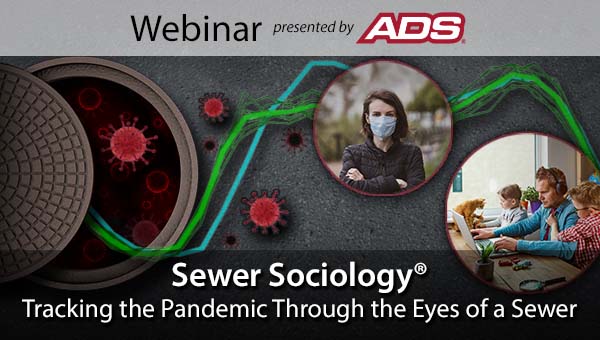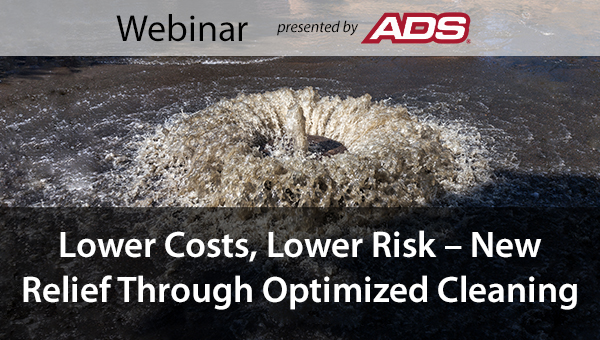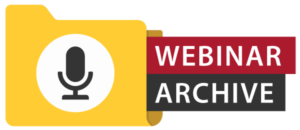
Why Use Transit-Time Flowmeters for Hydro Applications
WEDNESDAY, June 25, 2025 | 1:00 PM EDT, 12N CDT, 11am MDT, 10am PDT
Webinar Series Overview
How are ultrasonic (transit-time) flowmeters used in the Hydroelectric industry? These flowmeters are ASME PTC-18 and IEC60041 compliant and can offer highly accurate data based on the methodology of the technology which has been in use since the 1970’s. These hydroelectric applications range from Francis, Pelton, and Kaplan turbines. Since hydroelectric facilities are seldomly designed to optimize flowmeter accuracy requirements, it is important to have flowmeters that can be installed in existing pipe geometry and still offer highly accurate and reliable flow data. Due to the durability and longevity of this technology, this data can be used for a short-term turbine efficiency/performance test or provide real-time flow data for day-to-day operations or future efficiency testing for years after the initial installation.Professional Development Hour (PDH) Documentation Requirements
For interested webinar participants, ADS will provide documentation for professional development hours, subject to the following conditions and limitations:
- You must register individually, sign-in individually, and attend the live webinar in its entirety so that we have the means to validate your attendance and participation for continuing education purposes. We cannot provide PDH documentation for partial attendance, for viewing the webinar archive after the live webinar, or to individuals that watched the live webinar on another attendee’s screen without staying signed in for the duration of the webinar.
- Most organizations do not specifically approve continuing education providers. However, it is your responsibility to determine whether this webinar meets the guidelines set forth by any particular organization.
- Some organizations require the use of pre-approved continuing education providers. ADS is not a pre-approved provider for any particular organization, and this webinar should not be claimed as required continuing education for such organizations.
Duration: 45 minutes with up to 10 minutes of Q&A to follow

Speaker: Guy Miller
Guy is an Engineering Manager at Accusonic with over 26 years of experience in acoustic flow measurement. He holds a Bachelor of Science in Civil/Environmental Engineering from Worcester Polytechnic Institute and is a Registered Professional Engineer.
Did You Miss the Previous Webinars?
Take a peek at some of the webinars in the archive. Request access to all past ADS Webinars.

SPEAKERS: Patrick Stevens, P.E.; Kevin Enfinger, P.E.
Sewer Sociology® studies human patterns through water and sewer use. Join us as we delve into the COVID-19 pandemic and its effect on society through the eyes of the sewer.

SPEAKER: Kevin Enfinger, P.E.
Important engineering decisions are made every day regarding sanitary sewer, combined sewer, and storm sewer systems and often require the use of rainfall data. See how selecting the right equipment in the right quantities for your local rainfall conditions and your specific applications will lead to a successful rainfall monitoring program.

SPEAKER: Jay Boyd
Optimize Cleaning – See how new technologies are helping municipalities reduce cleaning by up to 80%, safeguard against SSOs with 24/7 monitoring, and avoid harmful side-effects of overcleaning.

